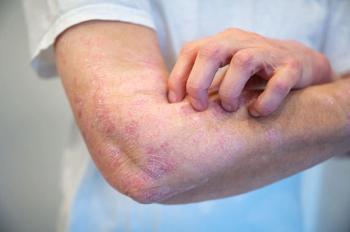
The Journal of Respiratory Diseases
- The Journal of Respiratory Diseases Vol 5 No 11
- Volume 5
- Issue 11
Clinical Citations: Increased risk of common infections in patients with diabetes mellitus?
Researchers in the Netherlands investigating the relative risks of common infections in patients with type 1 or type 2 diabetes mellitus (DM1 or DM2, respectively) determined that both groups are at increased risk for lower respiratory tract infection, urinary tract infection, and skin and mucous membrane infection.
Researchers in the Netherlands investigating the relative risks of common infections in patients with type 1 or type 2 diabetes mellitus (DM1 or DM2, respectively) determined that both groups are at increased risk for lower respiratory tract infection, urinary tract infection, and skin and mucous membrane infection.
In a prospective cohort study, the researchers trained 195 general practitioners to monitor common infections over 12 months in 26,328 adults, including 18,911 control patients with hypertension but not diabetes. Compared with the control group, patients with diabetes had equivalent risk of upper respiratory tract infection. For risk of lower respiratory tract infection, however, patients with DM1 had an adjusted odds ratio (AOR) of 1.42 and patients with DM2 had an AOR of 1.32, compared with the control group.
Patients with diabetes also had increased risk of other infections: for urinary tract infection, AOR was 1.96 for patients with DM1 and 1.24 for patients with DM2; for bacterial skin and mucous membrane infection, AOR was 1.59 for patients with DM1 and 1.33 for patients with DM2; and for mycotic skin and mucous membrane infection, AOR was 1.34 for patients with DM1 and 1.44 for patients with DM2.
In a related editorial, Jackson acknowledged that little evidence of an association between diabetes and risk of infection has existed to date. Challenges to this type of study have focused on the difficulty in differentiating between true increases in risk and either confounding effects of other comorbidities or surveillance artifacts, such as those resulting from variations in medical care-seeking behavior.
Jackson cautioned that their unvalidated outcomes were generally defined by diagnostic codes representing relatively mild illnesses, thereby creating associations susceptible to surveillance artifact. The association between diabetes and an increased risk of common infections may be influenced by a higher prevalence of comorbid factors. She acknowledged, however, that some of the results are consistent with other studies.
Articles in this issue
about 20 years ago
Clinical Citations: Can exposure to wood smoke cause lung cancer?about 20 years ago
Case In Point: Silicone-induced pneumonitis in a transgendered patientabout 20 years ago
Case In Point: Cystic fibrosis in an elderly womanabout 20 years ago
Clinical Citations: Pneumonia: A red flag for a serious comorbidityabout 20 years ago
Extrapulmonary tuberculosis, part 3: Abdominal involvementabout 20 years ago
When should you suspect asbestos-related pulmonary disease?about 20 years ago
The keys to diagnosing interstitial lung disease: Part 3Newsletter
Enhance your clinical practice with the Patient Care newsletter, offering the latest evidence-based guidelines, diagnostic insights, and treatment strategies for primary care physicians.





























































































































































































































































































































